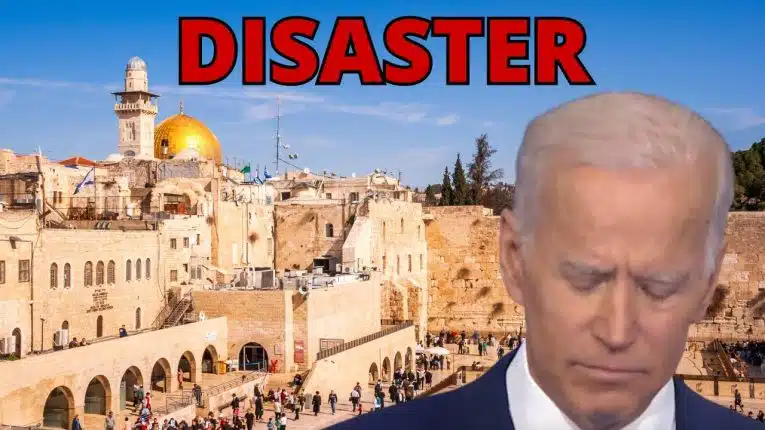
In 2011, the Monument Fire ripped through the Huachuca Mountains in Arizona—land belonging to the U.S. Forest Service. Following the fire, floods and torrential mudslides destroyed mountain spring water lines to the town of Tombstone.
Approximately one year later, “The Town Too Tough To Die,” is still unable to fix its water lines, affecting 1,500 residents and more than 400,000 annual visitors.
Due to the location of the springs being on a government wild land area, Tombstone residents cannot use the heavy machinery necessary to fix its water supply—Forest Service rules won’t allow it.
So far all the residents of Tombstone have been able to do is file a lawsuit against the Forest Service.
How far will a government agency carry out its rules and regulations before the health of its citizens becomes a viable concern?
The crisis doesn’t end there. Because of the damaged water supply, an element called arsenic is running through Tombstone resident’s tap water at a higher level than allowed by the Environmental Protection Agency (EPA).
Arsenic is semi-metal element, which often finds its way into drinking water from natural deposits in the earth or from agricultural or industrial practices.
If consumed in some side effects include: thickening and discoloration of the skin, stomach pain, nausea, vomiting; diarrhea; numbness in hands and feet; partial paralysis; and blindness. Arsenic has also been linked to cancer of the bladder, lungs, skin, kidney, nasal passages, liver, and prostate.
Because of these risks, the EPA has set the limit for arsenic in water supplies at .010 parts per million (10 parts per billion).
Not only are residents and tourists alike stuck with a damaged water supply but a contaminated one as well. By EPA standards, the federal government is poisoning its own citizens because they refuse to allow them to fix the pipelines that bring them safe drinking water.
Unfortunately Tombstone isn’t the only example of this government abuse. Due to the Endangered Species Act (ESA) and the U.S. Forest Service, a robust and necessary industry was shut down about 20 years ago over a bird.
The Northern spotted owl was once thought to only be able to survive in old forests, overgrown and unmaintained. So when it became an endangered special in 1990, and even before, great cutbacks were made in the logging industry throughout California, Oregon and Washington states. Ironically, the Obama administration recently admitted that the owl still hasn’t made a comeback and so has decided to kill a more dominant owl species in hopes of rejuvenating the spotted owl’s population.
But in the midst of all this, livelihoods of those people and communities that depended on the timber industry were crushed under the government’s heavy environmental hand—and to what avail?
Another area pained by an out-of-control environmentalist agenda by the government is the Central Valley in California.
Agricultural production in the Central Valley accounts for $26 billion in total sales and 38 percent of the Valley’s labor force. Farmers in this area grow more than half the nation’s vegetables, fruits and nuts.
But in order for these products to grow, the Central Valley needs water — and the past few years the government has been withholding that vital resource.
The problem is the government wants water to be retained in the Sacramento-San Joaquin Delta, California’s main water source, to protect a three-inch fish called the delta smelt and other salmon species. However, not allowing water in the Delta to be shipped south could cut water to the Central Valley, by 300,000 acre feet. Ironically, there is no evidence that flushing water out to the Pacific actually helps the fish.
Because this is an ongoing case, with the federal government using the ESA to protect the salmon and delta smelt, farmers have already been forced to take severe cuts in their water distribution.
Since farmers don’t know one year to the next how much water they will receive, they must make the difficult decision of what to plant and what once-productive farmlands to leave fallow. This does nothing but leave this region with some of the highest unemployment in the nation, destroying livelihoods and families.
Again, when will government agencies put their own agendas aside for the health and protection of its people?
The government strangling the lives of its citizens is no small matter and is far too prevalent here in America.
“It’s hard to believe that a government would be willing to keep its citizens in danger or out of work in an attempt to protect a species or area of land,” says Bill Wilson, president of Americans for Limited Government (ALG). “You might see this behavior from a corrupt dictator in another country, but it should never happen in America.”
This showdown has come down to citizens vs. government agencies. The fact that the government has let it get this far is bad enough. It’s time the citizens put an end to this abuse of power.
Rebekah Rast is a contributing editor to Americans for Limited Government (ALG) and NetRightDaily.com. You can follow her on twitter at @RebekahRast.







